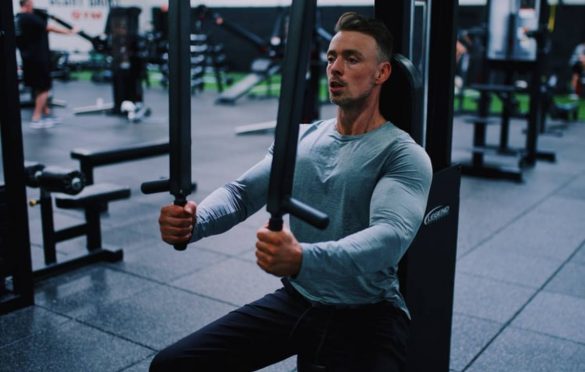Is a Chest Press Machine Good For Fitness?

The chest press machine is an efficient upper-body exercise. There are no awkward methods to master or weights to balance. Pilate’s workouts might help you improve your hip extension as well.
The chest press isn’t only for beginners; established lifters may benefit from it as well. Put it after your workout to allow your muscles to recover. The machine for chest presses.
Table of Contents
The pectoralis major is a muscle in the chest
These are your primary chest muscles, sometimes known as your Pecs. Their principal function is to allow your shoulder joint to bend horizontally
Anterior deltoids
The muscles on the front of your shoulders are known as the altissimo dorsal. They act in tandem with your Pecs to flex your shoulder joint horizontally.
Triceps brachia
The muscle that runs up your upper arm from the back. This is your major elbow extends and is sometimes refers to as your triceps.
Chest press machines are frequently designed differently. Having said that, they all function in a somewhat similar manner.
Follow these guidelines to get the most out of your chest press training.
- Position the seat so that the handles are at about chest height.
- Sit on the machine and use an overhead grip to grab the handles. Your hands should somewhat wider than shoulder-width apart. Some machines include foot pedals that help you raise the weights, making it easier to hold the handles. Use this function if it is available.
- Press the handles away from you with your head up and your lower back slightly arched until your arms are straight but not lock. When you lock your elbows, you put a lot of tension on your joints.
- Bend your arms and drop the weights to the limit of your range of motion. Shoulder overextension might result in injury.
- Use steady, steady actions, lifting the weight for 2-3 seconds and lowering it for the same length of time. This guarantees that your muscles are doing all of the work and that momentum is not taking over.
The chest press is a basic exercise, but that doesn’t mean it can’t be done poorly.
Here are a few typical chest press errors to avoid.
Too high or too low a seat – the handles should be in level with your shoulders. If they are not, you run the danger of placing undue strain on your shoulder joints.
This may cause your shoulders to overstretch. Simply reduce the weights to the extent that your flexibility permits.
Locking your elbows between reps – might result in damage. It causes significant wear and strain on your elbow joints. Each rep should stop just short of complete elbow extension.
The Smith machine bench press is a safe and effective machine workout. The weight guides by rods and the safety catches prevent the weight from falling over your chest.
- Insert a bench into the machine and underneath the bar. Set the bar to around waist height. Check that the bench is in the center of the bar.
- Reach for the bar while lying down on the bench. Use a little broader overhand grip than shoulder width. The bar should be just above your sternum. Keep a flat foot on the floor, a little arch in your lower back, and your abs braced.
- Extend your arms and remove the bar from the hooks. To disengage the safety catches, twist the bar.
- Lower the bar to your chest by bending your arms. Do not try to lift the weight off your chest.
- Return the bar to arm’s length and repeat. At the end of your set, twist the bar to re-engage the safety catches.
Also Read: Hang Clean: Do Hang Clean burn fat?
You may also do this exercise on an incline or decline bench. Incline Smith machine bench presses target your upper chest, whilst decline versions target your lower chest.


